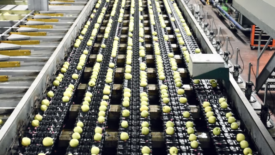Plant-Based
New Food Sources and Food Production Systems: Exploring the Food Safety Angle
New food sources can help address security and sustainability challenges, but they may also bring unique food safety issues
June 8, 2022
Safety and Nutritional Risks Associated with Plant-Based Meat Alternatives
Several challenges are associated with newer plant-based foods, including allergen, chemical, quality, and microbiological concerns
April 20, 2022
Planting the Food Safety Flag: Plant Protein's 'Better Food' Halo Shouldn't Breed Food Safety Overconfidence
The plant-based foods sector must emerge from its "learning curve" as a mature industry with a strong sense of food safety purpose
April 18, 2022
Conquering Food Safety Challenges for Plant-Based Ingredients
Ingredients in plant-based food products introduce unique challenges for food safety
August 12, 2021
Never miss the latest news and trends driving the food safety industry
eNewsletter | Website | eMagazine
JOIN TODAY!Copyright ©2025. All Rights Reserved BNP Media.
Design, CMS, Hosting & Web Development :: ePublishing










